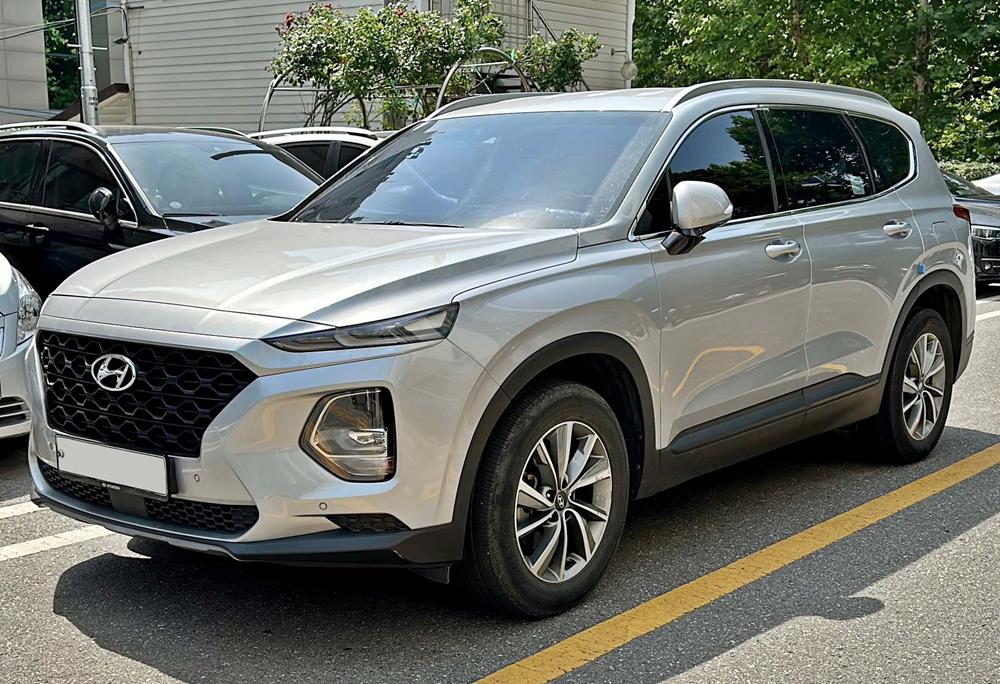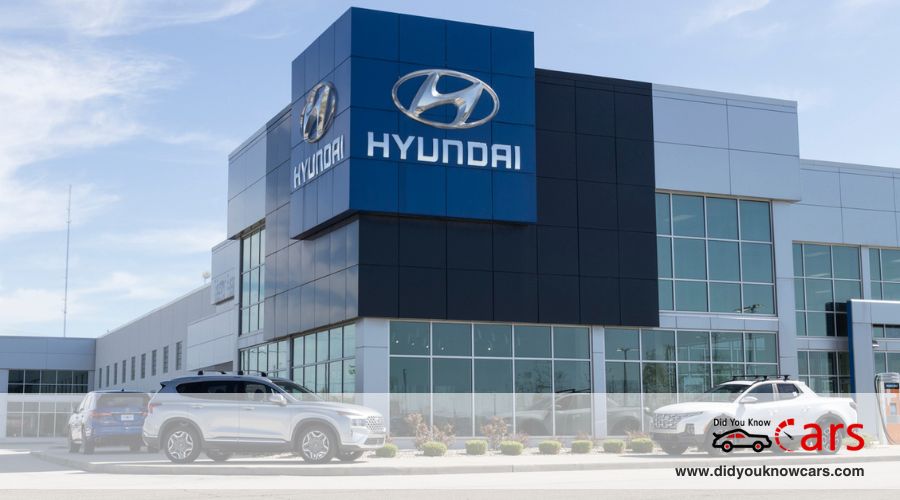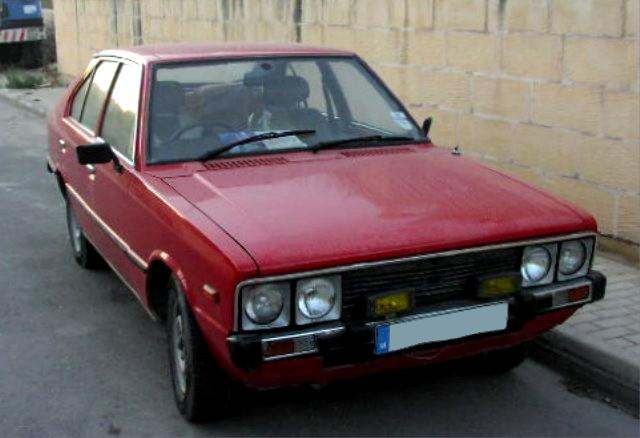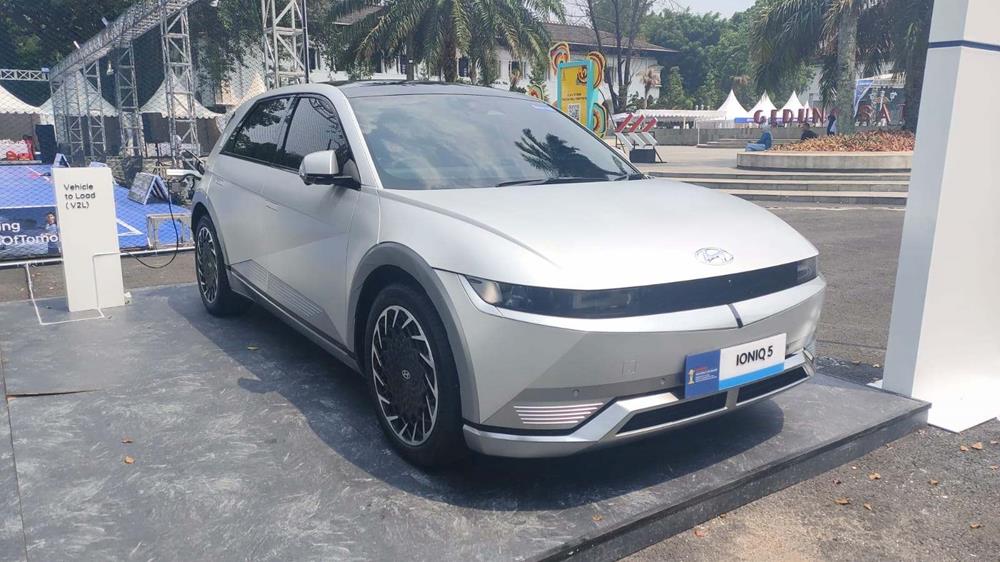Hyundai is a name synonymous with resilience, progress, and technological breakthroughs. It operates the world’s largest integrated car manufacturing facility and reigns as the world’s third-largest automaker in terms of production, behind Toyota and Volkswagen.
Let us dive into the history of Hyundai – a story of how a small construction company emerged into the largest South Korean automaker and a global automotive powerhouse. If you want to learn more, here are some more interesting facts about Hyundai.
History of Hyundai
The Beginning of Hyundai (1947-1975)
The Foundation and Early Years
The story of Hyundai Motors began in 1947 when Chung Ju-Yung established the Hyundai Engineering and Construction Company. After the liberation of South Korea in 1945, the company was awarded government construction contracts, allowing it to build much of the country’s transportation infrastructure. Hyundai built the Kyeong-bu Expressway, among other important structures.
The name “Hyundai” (현대) is a Korean word which, when translated into English, means “modern times,” derived from the word “Hyun,” which means “modern,” and “dai,” which means “era” or “generation.” This choice of name reflects the company’s commitment to be at the forefront of innovation and modernity in the automotive industry.
Establishment of Hyundai Motor Company
In 1967, Hyundai Motor Company was established as a response to the country’s rapid modernization and industrialization. Hyundai Motor Company’s initial foray into the automotive world was through a partnership with Ford Motor Company. This collaboration led to the production of the Cortina in 1968 at Hyundai’s Ulsan plant, setting a record for the quickest time from ground-breaking to full-scale operations for any Ford assembly plant worldwide.
Developing the Hyundai Pony: South Korea’s First Car
In February 1974, Hyundai embarked on a significant project to develop its own car. George Turnbull, previously the managing director of Austin Morris at British Leyland, was hired to lead this initiative. Turnbull brought on board five other top British car engineers: body designer Kenneth Barnett, engineers John Simpson and Edward Chapman, chassis engineer John Crosthwaite (formerly of BRM), and chief development engineer Peter Slater.
This team’s efforts culminated in creating the Hyundai Pony in 1975, South Korea’s first car, styled by Giorgio Giugiaro of Italdesign and powered by Mitsubishi Motors’ technology. The Pony marked a defining moment for Hyundai, setting the stage for its future endeavors in the automotive industry.
Rapid International Expansion (1980s-1990s)
Breaking into Global Markets
The 1980s were a period of rapid growth and international expansion for Hyundai. A year after the Pony’s debut, Hyundai began exporting it, first to Ecuador and then to the Benelux countries.
In 1982, the company made a grand entrance into the British market with the Pony, marking the first Korean car to be sold in the UK. The Pony’s success continued in Canada, where it became the top-selling car at one point.
Debut in the United States
1986 was a pivotal year for Hyundai, marking its entrance into the U.S. market with the Hyundai Excel. The car’s affordability led to its nomination as “Best Product #10” by Fortune magazine. This introduction signaled Hyundai’s readiness to compete in one of the world’s largest car markets. Excel’s affordability and practical design helped it set an all-time record for first-year sales in the U.S.
Establishment of Hyundai Motor India
In 1996, Hyundai further expanded its global footprint by establishing Hyundai Motor India Limited, with a production plant in Irungattukottai near Chennai, India. This expansion was part of Hyundai’s strategy to establish a presence in emerging markets.
Technological Independence and Quality Focus (1980s-1990s)
Developing Proprietary Technology
In 1988, Hyundai began manufacturing models with its own technology, starting with the midsize Sonata. By spring 1990, Hyundai’s aggregate automobile production reached four million units. The following year, in 1991, Hyundai achieved a significant milestone in technological independence by developing its first proprietary gasoline engine, the Alpha, along with its own transmission system.
This period also saw the introduction of popular models like the Accent, Dynasty, and Tiburon, further cementing Hyundai’s position in the global market.
Quality Management and International Manufacturing
The establishment of the Hyundai Motor Europe Technical Center and opening a manufacturing plant in Turkey highlighted Hyundai’s commitment to quality and global reach. The company also began focusing on quality management, with Chairman Mong-Koo Chung emphasizing product quality to position Hyundai as a global contender.
Embracing Global Challenges and Opportunities (2000s)

Expanding Horizons and Overcoming Challenges
In the early 2000s, Hyundai continued its growth trajectory, albeit facing new challenges and seizing global opportunities. The launch of the Santa Fe SUV in 2000 marked the company’s entry into the SUV market, resonating with American buyers and becoming Hyundai’s best-selling car. Hyundai’s focus on higher-value products was evident with the establishment of the Hyundai European Design Center in 2001, showcasing its commitment to tailor its designs to specific markets.
However, the journey wasn’t without its challenges. Hyundai faced issues regarding inflated fuel economy numbers in the U.S. and performance discrepancies in Brazil. Despite these setbacks, Hyundai’s resilience and commitment to quality saw it through, significantly improving its brand ranking and sales figures.
Hyundai’s Foray into Motorsports
Hyundai’s venture into the motorsports circuit, particularly with the Accent WRC, further highlighted the brand’s versatility and global appeal. Although the company faced challenges in securing overall victories, its participation in these high-profile events significantly boosted its brand image and demonstrated Hyundai’s technological prowess.
Brand Overhaul and Global Recognition (1998-2011)
Rebranding and Leadership Transition
In 1998, Hyundai began to overhaul its image, aiming to establish itself as a world-class brand. This effort included a leadership transition in 1999 when Chung Ju-yung transferred control of Hyundai Motor to his son, Chung Mong-koo. Under the new leadership, Hyundai Motor Group invested heavily in vehicle quality, design, manufacturing, and long-term research.
Achieving High Rankings and Sponsorships
By 2004, Hyundai had significantly improved its brand perception, ranking second in “initial quality” in a survey by J.D. Power and Associates in North America. According to Interbrand, Hyundai has also become one of the top 100 most valuable brands worldwide. Since 2002, Hyundai has officially sponsored the FIFA World Cup, enhancing its global brand visibility.
Leadership Challenges
In 2006, the South Korean government investigated Chung Mong-koo’s practices as head of Hyundai, suspecting him of corruption. It led to his arrest, as he was charged with embezzlement of 100 billion South Korean won. As a result, he was replaced by Hyundai Vice Chairman and CEO Kim Dong-jin.
CEO Transition
In 2011, Hyundai saw another leadership change when Yang Seung-suk announced his retirement as CEO of Hyundai Motor Co., with Chung Mong-koo and Kim Eok-jo temporarily taking over the CEO duties.
Research, Development and Business Expansion (1990s-2021)
Innovation in Electric and Hybrid Technology
In the late 1990s and early 2000s, Hyundai ventured into electric and hybrid vehicle technology. The Sonata Electric Vehicle prototype in 1991 and the hybrid-electric FGV-1 in 1995 marked the beginning of Hyundai’s journey in alternative fuel vehicles. The introduction of the Ioniq in 2016, available in hybrid, plug-in hybrid, and all-electric versions, further showcased Hyundai’s commitment to sustainable mobility.
Global RD Centers
Hyundai has established six research and development centers worldwide, located in South Korea, Germany, Japan, India, and the United States. The Hyundai Design Center in California, established in 1990 and later moved to a new facility in Irvine in 2003, plays a crucial role in developing designs for the U.S. market.
Proving Ground and Intellectual Property
In 2004, Hyundai completed its Hyundai/Kia proving ground in California City, California, a state-of-the-art facility for vehicle testing. Hyundai’s commitment to innovation is also reflected in its ranking as 4th in the world for industrial design registrations in 2020, according to WIPO’s annual World Intellectual Property Indicators.
Strategic Acquisitions and Alliances
Hyundai’s business strategy includes significant acquisitions and alliances. In 1998, it acquired the majority of rival Kia Motors. The company also established and later dissolved a strategic alliance with DaimlerChrysler. Hyundai’s global manufacturing presence includes plants in North America, India, the Czech Republic, Russia, China, and Turkey. By 2011, Hyundai was the world’s fourth-largest automaker by sales volume.
Sustainable Mobility and Hydrogen Technology
Hyundai’s vision for the future is firmly rooted in sustainability and innovation. The company has made significant strides in hydrogen technology, introducing the Nexo, a hydrogen-powered crossover SUV, in 2018. Hyundai’s commitment to alternative fuel sources is evident in its ongoing development and promotion of hydrogen fuel cell technology.
Autonomous Vehicle Development with Apple and Boston Dynamics Acquisition
In recent developments, Hyundai has been involved in talks with Apple to build an autonomous car, although it announced that the talks were no longer ongoing. In June 2021, Hyundai Motor Group completed its acquisition of a controlling interest in the robotics firm Boston Dynamics, marking its foray into advanced robotics and automation.
The Ioniq and Future Mobility
Hyundai announced the launch of the Ioniq as its new electric brand in 2020, reflecting its vision for the future of mobility. The Ioniq 5, the first model on the new Electric Global Modular Platform (E-GMP), demonstrated Hyundai’s technological advancements with features like 800 V charging capability and a 350 kW charger.
Focus on Dynamics and Future Leadership (2014-2021)
Emphasizing Vehicle Dynamics
In 2014, Hyundai started an initiative to focus on vehicle dynamics in its vehicles. The company hired Albert Biermann, former Vice President of Engineering at BMW M, to lead chassis development, aiming to become a leader in ride and handling.
New Leadership Era
On October 14, 2020, Euisun Chung was inaugurated as the new chairman of the Hyundai Motor Group, with his father, Chung Mong-koo, being made Honorary Chairman. This marked the beginning of a new era in Hyundai’s leadership.
Record Profits
In April 2021, Hyundai reported its highest profit rise in four years, with a 187% increase and a profit of $1.16 billion in the first quarter of the year.
The Future: Electric and Autonomous Vehicles
As we move into a new era of automotive technology, Hyundai is at the forefront of electric and autonomous vehicle development. The Ioniq brand, dedicated to electric vehicles, symbolizes Hyundai’s commitment to eco-friendly transportation. The E-GMP platform, introduced in 2020, serves as the foundation for new Hyundai and Kia electric vehicles, emphasizing fast charging and long driving range.
The Ioniq 5, launched in 2021, epitomizes Hyundai’s technological advancements in electric vehicles. Its rapid charging capabilities and extended range set new standards in the industry, paving the way for future models like the Ioniq 6 sedan and Ioniq 7 large SUV.
Hyundai’s Impact on Automotive Industry and Technology
Innovative Engineering and Design
Hyundai’s contribution to the automotive industry is marked by its innovative engineering and design. The company’s focus on creating vehicles that combine aesthetics with functionality has set new standards in automotive design. Hyundai’s use of fluidic sculpture design philosophy, which began with the 2009 Hyundai Sonata, brought a distinctive and dynamic look to its range, influencing industry trends towards more visually appealing and aerodynamic car designs.
Pioneering in Fuel Efficiency and Environmental Sustainability
Hyundai has been a frontrunner in developing fuel-efficient and environmentally sustainable vehicles. The introduction of the Ioniq in 2016, available in hybrid, plug-in hybrid, and all-electric versions, was a landmark in Hyundai’s eco-friendly initiatives. The company’s commitment to sustainability is also evident in its foray into hydrogen fuel cell technology with vehicles like the Hyundai Nexo. These efforts have not only contributed to reducing the environmental impact of automobiles but have also spurred the industry toward more sustainable practices.
Advancements in Safety and Technology
Safety and technology are other areas where Hyundai has made significant contributions. Hyundai’s SmartSense technology, which includes features like forward collision-avoidance assist, lane-keeping assist, and driver attention warning, has been instrumental in enhancing vehicle safety. The brand’s integration of advanced infotainment systems and connectivity features, like Blue Link and Android Auto/Apple CarPlay compatibility, has raised the bar for in-car technology and user experience.
Leadership in Electric and Autonomous Vehicles
Hyundai’s leadership in electric and autonomous vehicle technology is shaping the future of the automotive industry. The company’s Electric Global Modular Platform (E-GMP) underpins its new generation of electric vehicles, offering longer range, faster charging, and improved performance. Hyundai’s investment in autonomous driving technology, including partnerships with companies like Aurora Innovation, indicates its commitment to being at the forefront of this transformative era in automotive technology.
Global Manufacturing and Supply Chain Innovation
Hyundai’s global manufacturing and supply chain innovations have contributed significantly to the automotive industry. The company operates the world’s largest integrated automobile manufacturing facility in Ulsan, South Korea, setting benchmarks in efficient, high-quality vehicle production. Hyundai’s global network of plants and its agile supply chain management have been crucial in its ability to quickly respond to market demands and maintain a strong global presence.
The Future of Hyundai
Leading the Charge in Electric Vehicle Innovation
As the world pivots towards sustainable mobility, Hyundai is positioning itself at the forefront of the electric vehicle (EV) revolution. The company’s commitment to this sector is evident in its substantial investments in EV technology and infrastructure. The launch of the Ioniq brand, dedicated solely to electric vehicles, marks a significant step in Hyundai’s journey towards a greener future.
Hyundai’s Electric Global Modular Platform (E-GMP) is a cornerstone of its EV strategy. This platform, designed specifically for electric vehicles, offers numerous advantages, including extended range, fast charging capabilities, and improved performance. The Ioniq 5, the first vehicle built on the E-GMP platform, showcases Hyundai’s prowess in EV technology with its ultra-fast charging ability, allowing the battery to charge from 10% to 80% in just 18 minutes.
Autonomous Driving: The Next Frontier
Autonomous driving technology is another area where Hyundai is making significant strides. The company is not just focusing on developing autonomous vehicles but is also investing in the broader ecosystem necessary to support this technology. This includes partnerships with tech companies and startups, as well as involvement in various pilot projects around the world.
Hyundai’s collaboration with companies like Aptiv in the joint venture Motional is a testament to its commitment to autonomous vehicle technology. Motional is working on developing a Level 4/5 autonomous driving platform, which would allow vehicles to operate without human intervention under certain conditions. The launch of the Robotaxi service using Hyundai vehicles is a glimpse into the future of urban mobility.
Hydrogen Fuel Cell Technology
In addition to EVs and autonomous vehicles, Hyundai is also a leader in hydrogen fuel cell technology. The company’s Nexo, a hydrogen fuel cell SUV, represents one of the most significant advancements in this area. Hyundai’s commitment to hydrogen technology is part of its broader strategy to lead in the field of alternative fuel vehicles, providing a diverse range of environmentally friendly transportation options.
A Vision for Urban Air Mobility
Looking further into the future, Hyundai has set its sights on urban air mobility (UAM). The company envisions a future where air taxis and other forms of aerial transportation play a significant role in urban transport. Hyundai’s investment in this area indicates its commitment to innovation and willingness to explore new frontiers in mobility.
Final Word
As we conclude our exploration of Hyundai’s impressive history, it’s clear that this company adapts to change and drives it. Hyundai’s journey from a local automaker to a global leader in automotive innovation is a testament to its vision, determination, and ingenuity.
With its ongoing contributions to the automotive industry and a keen eye on the future, Hyundai is not just keeping pace with the latest trends but actively shaping the future of mobility. Its commitment to electric and autonomous vehicles promises to usher in a new era of sustainable and smart transportation.



